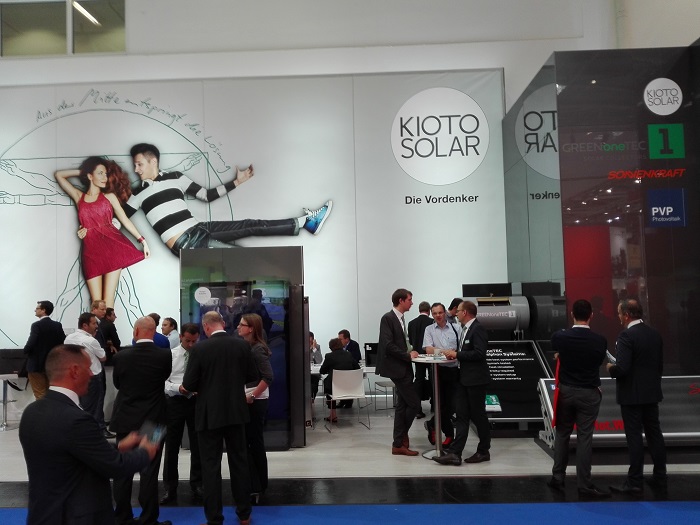Germany’s “canary in the mine” status when it comes to solar long been a given, and at the first day of the Intersolar Europe exhibition in Munich it was more apparent than ever that next-gen trends and technologies in residential PV were being ushered to center stage.
Despite slightly sparser traffic than in previous years – perhaps a trick of the mind played by the exhibition’s extended area and the strange sight of three lonely-looking plants dotted across the plot where SolarWorld's booth would normally occupy – the exhibition nevertheless is serving up plenty of new products and services targeted at a more mature solar market.
This emergence of the ‘prosumer’ was epitomized by the unveiling of SolarPower Europe’s “seven commitments on digitalization”, which have been identified as the most viable steps towards a digital energy future, with solar at the center.
The Digitalization Task Force, set up last year, is intent on steering Europe’s PV sector towards the opportunities offered by a digitalized energy system. “There is so much the solar industry can do proactively to roll out digital technologies in this space,” said Task Force leader and SMA representative of the board for grid integration, Bernd Engel. “The interoperability of hardware and software is particularly important to ensure we don’t develop technology in silos.”
Huawei’s chief marketing officer Alison Finch added that solar’s commitments to a digitalized present and future were “both progressive and substantial”, and demonstrate a willingness to innovate wherever possible.
“Digitalization will make solar more cost-effective, reliable and secure,” Finch said. “Whether it will be Blockchain-based peer-to-peer exchanges, cybersecurity or smart grids, we will implement the highest standards.”
Popular content
Huawei introduced at the exhibition its FusionHome Smart Energy Solution for the European residential market – a platform that combines smart PV hardware and intelligent monitoring software to connect technologies in the modern home. It works by communicating intelligent home appliances and controlling both information and energy flow as the homeowner sees fit.
This ‘full circle’ approach to home energy management systems was apparent at a number of booths on day one. Germany’s AEG introduced its new single- and three-phase inverters that are suitable for residential through to industrial-scale applications. Stuart Brannigan, MD of AEG Solar, affirmed the message that the company will soon offer a complete, 360-degrees home solar solution, telling pv magazine that a home battery system will be launched before the end of the year.
China’s BYD unveiled its new B-Box HV (high voltage) energy storage system, which the company claims can reduce installation time to just 30 minutes, offering quick plug-and-play storage that is modular to meet the varying needs of the homeowner.
SolarEdge, the Israeli optimizer and inverter company, has placed a keen focus this year on safety, namely the arc and fault detection capabilities of its new S-Series optimizers, which offer improved safety at no added cost to the consumer, company founder Lior Handelsman told pv magazine.
On the module front, greater aesthetics and higher efficiencies are now a given for the European market, but there were some interesting innovations on offer, not least a rather unusual new module design by Austrian firm Kioto Solar, which also showcased a broad BIPV portfolio. China’s LONGi Solar, meanwhile, was showcasing its 360Wp mono-PERC, bifacial glass-glass module, which the company claims pushes the boundaries in performance (offering an additional 25% rearside power gain in certain conditions) and durability, thereby lowering LCOE significantly for the homeowner.
This content is protected by copyright and may not be reused. If you want to cooperate with us and would like to reuse some of our content, please contact: editors@pv-magazine.com.


By submitting this form you agree to pv magazine using your data for the purposes of publishing your comment.
Your personal data will only be disclosed or otherwise transmitted to third parties for the purposes of spam filtering or if this is necessary for technical maintenance of the website. Any other transfer to third parties will not take place unless this is justified on the basis of applicable data protection regulations or if pv magazine is legally obliged to do so.
You may revoke this consent at any time with effect for the future, in which case your personal data will be deleted immediately. Otherwise, your data will be deleted if pv magazine has processed your request or the purpose of data storage is fulfilled.
Further information on data privacy can be found in our Data Protection Policy.